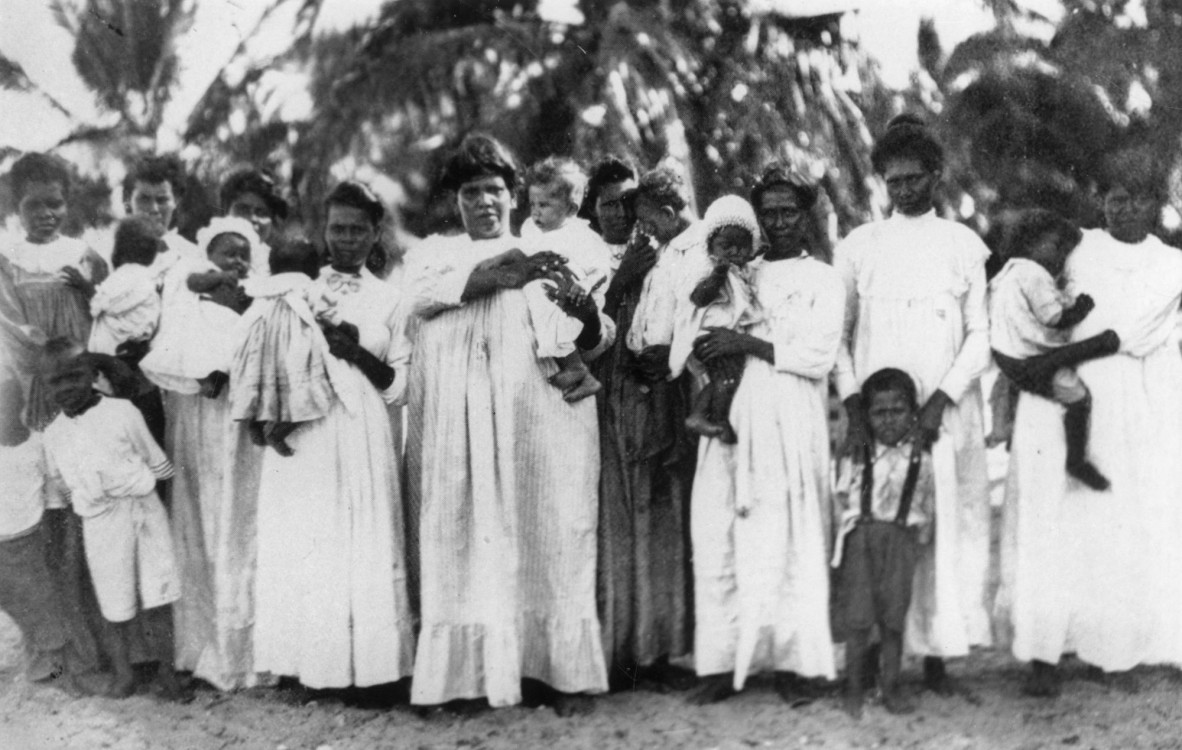Aboriginal and Torres Strait Islander people should be aware that this blog post contains images or names of Aboriginal people who have passed; this is not meant to cause distress or offence but raise awareness of our shared history and the story of Aboriginal and Torres Strait Islander languages across Queensland.
Welcome to Week Fourteen of the A-Z of Queensland Aboriginal and Torres Strait Islander languages!
This week's language of the week is Teppathiggi, one of the languages of Western Cape York. Teppathiggi is also known as T'yeppathiggi, Tepithiki, Teyepathiggi while McConnell (1939) referred to the language as Tepiti and Capell described the the language as Debdigh. There is uncertainty over the shortening of the language name with the suggestion that the final sound in the name is a voiced velar fricative which is difficult for an English speaker's ear to hear and represent in writing.
Traditionally, Teppathiggi was spoken on the Middle Ducie River and Lower Batavia River. The expansion of cattle and later gold into the region and the presence of Native Police on the Cape resulted in frontier violence with remnant Aboriginal groups removed to missions such as Batavia River Mission. Batavia Mission was established in 1891 by Moravian missionaries James Ward and Reverend Hey. Initially groups from Mpakwithi, Thaynhakwith, Warrangku, Wimarangga and Yupungathi along with Teppathiggi peoples were sent to Batavia. It was later renamed Mapoon and operated by the Presbyterian church; the name ‘Mapoon’ is believed to be an anglicised translation of a Tjungundji word meaning ‘place where people fight on the sand-hills’.

Young Aboriginal women with their babies and small children, Mapoon, 1914. JOL Negative Number 107798.
Under the Protection Act during the period from 1901-1910 groups from as far away as Cloncurry, Burketown and Normanton in the Gulf were sent to Mapoon. In the 1960's with the advent of bauxite mining in the region, the Queensland Government forced residents to relocate to New Mapoon on the Northern Peninsula Area (NPA). There are some Teppathiggi knowledge holders at New Mapoon; however, according to Austlang the language is considered endangered. Community efforts on NPA as well as family groups who have returned to Old Mapoon are supported by the Pama Language Centre as well as Northern Peninsula Area Regional Council.
Cape York Languages map showing location of Teppathiggi, Pama Language Centre.
The above map is from the Pama Language Centre website and shows the location of Teppathiggi and neighbouring languages. At Batavia Mission, traditional languages were forbidden and there is minimal documentation on Teppathiggi - Roth collated some words from Hey at Batavia Mission, while later linguistic work in the region by McConnell and Thomson included references to Teppathiggi. Contemporary work by Hale, Sutton, Rigsby and others found little evidence of Teppathiggi which shares some words with neighbouring languages of Luthigh and Tjungundji.
State Library collections hold limited material on Teppathiggi with some vocabulary included in general references on languages from Western Cape York. Some published works of Roth, McConnell, Thomson, Hale, Sutton and Rigsby are held in the collections.
Join State Library for next week's Language of the Week - Umpila from Eastern Cape York!
Desmond Crump
Indigenous Languages Coordinator, State Library of Queensland
State Library of Queensland Aboriginal and Torres Strait Islander Languages Webpages
State Library of Queensland Aboriginal and Torres Strait Islander Languages Map
Spoken: Celebrating Queensland languages exhibition
Jarjum Stories exhibition
Minya Birran: What next for Indigenous Languages?
Additional material for this blog post was drawn from the Pama Language Centre and the Queensland Government Aboriginal and Torres Strait Islander Community Histories wepbages.
Images
Cover image: Large group of people gathered outside the church at Batavia River, Mapoon, 1904. JOL Negative Number: 79802
Young Aboriginal women with their babies and small children, Mapoon, 1914. JOL Negative Number 107798.
Language groups of Cape York. Sourced from Pama Language Centre website.
References and Further Reading
State Library collections have some material relating to Teppathiggi language and people; such items are usually part of generic language materials from Cape York.
Dixon, R. M. W. and Blake, B. (Eds) (1981) Handbook of Australian languages, vol. 2. J 499.15 HAN
Erkenbrecht, C. (2017) "German Moravian missionaries on western Cape York Peninsula and their perception of the local Aboriginal people and languages", in Petersen, N., and Kenny, A. (2017) German Ethnography in Australia. Available online via One Search.
Paton, F. (1911) Glimpses of Mapoon: the story of a visit to the north Queensland mission stations of the Presbyterian Church. P 266.52 PAT
Roth, W. E. (1901-1910) North Queensland Ethnography: Bulletins 1-18. NAT 306.089 rot
Roth, W. E. (1898-1903) "Reports to the Commissioner of Police and others, on Queensland aboriginal peoples 1898-1903." FILM 0714
Sutton, P. (ed) (1974) Languages of Cape York: papers presented to the Linguistic Symposium, Part B, held in conjunction with the Australian Institute of Aboriginal Studies Biennial General Meeting, May,1974. G 499.15 1976
Tindale, N. B. (1974) Aboriginal tribes of Australia: their terrain, environmental controls, distribution, limits and proper names. Q 994.0049915 tin
Ward, A.(1908) The miracle of Mapoon, or, From native camp to Christian village. RBJ 266.52 WAR
Wharton,G. (1996) The Day They Burned Mapoon: A Study of the Closure of a Queensland Presbyterian Mission. Dissertation available online via One Search.
Comments
Your email address will not be published.
We welcome relevant, respectful comments.